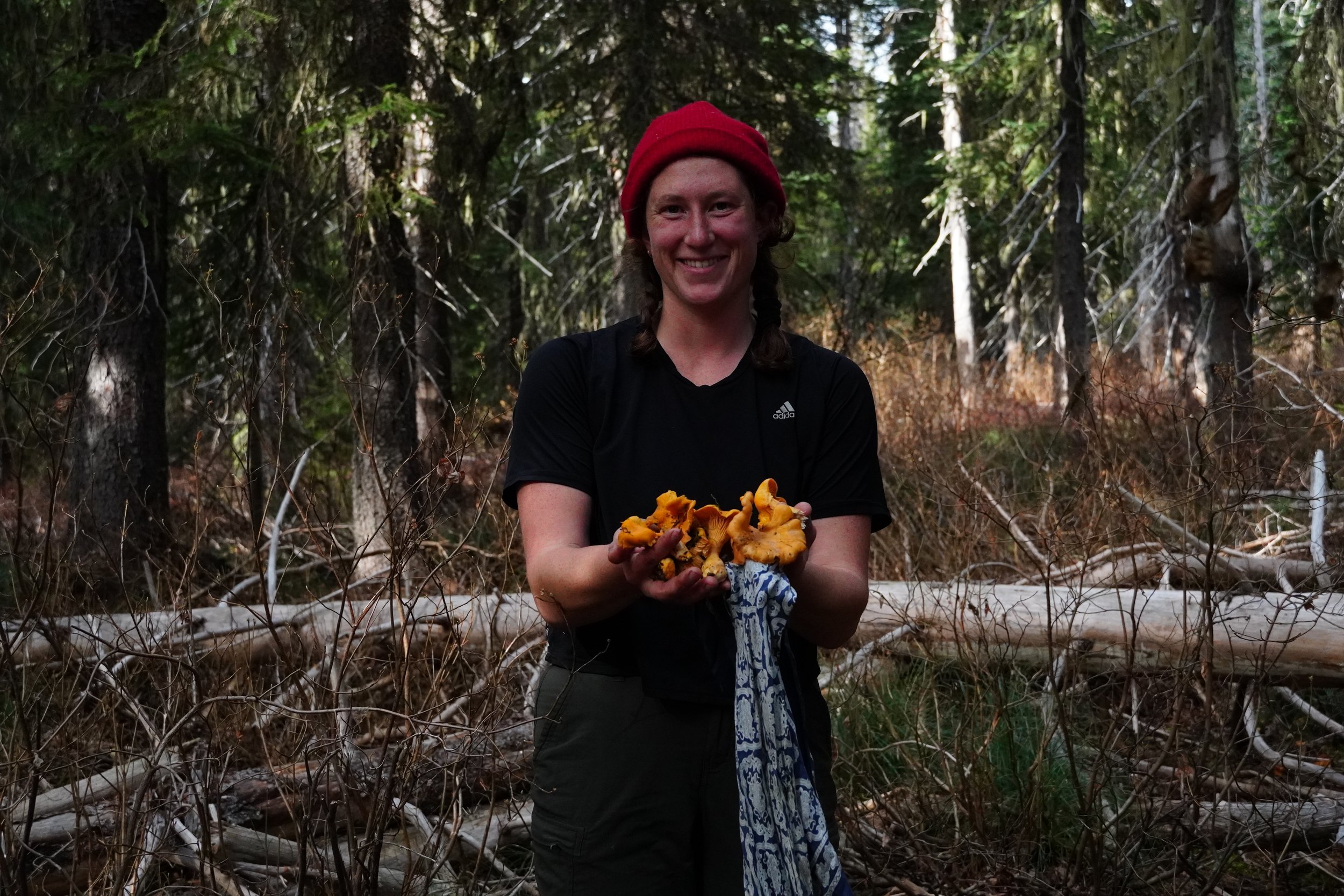The Great Burn area is a fantastic place to forage for mushrooms on your adventures. Before we dive in, it’s important to know the forest regulations on gathering:
Lolo National Forest — No permit required for quantities under 5 gallons. A free-use permit required for quantities between 5 and 20 gallons. For quantities larger than this, please contact your local forest office for more details. Please note: All mushrooms collected under incidental or personal use must be cut lengthwise in half.
Clearwater National Forest — A personal use permit is required for up to 20 gallons per person, per season. This is limited to 5 gallon per day. For quantities larger than this, please contact your local forest office for more details. Please note: Mushrooms must be cut in half lengthwise at the time of harvest.
A couple of our foraging favorites include golden chanterelles and morels:
Chanterelles (Cantharellus spp.)
Chanterelles are one of our favorite trail dinners as they arise with a golden color. These are one of the best tasting mushrooms to cook with, and they’re super special because they can’t be cultivated so you have to go out and forage for them! They are a late rise, typically in August and later around these parts. We even enjoyed picking some in the third week of October this year!
As the mushroom grows, it assumes a funnel shape. And, you don’t just have to identify these by sight, they also smell fruity - like apricots!
Please note: The jack o’lantern mushroom is a known look-alike to the golden chanterelle. Please know the difference before harvesting.
Morels (Morchella spp.)
Morels are probably the most common mushroom to collect. They are hard to mistake, and taste oh-so-good! Commonly found in disturbed and burned areas, they grow from the ground either individually or in clumps. Morels are early risers and can be found in the late spring. Similar to the chanterelles, these mushrooms are not grown commercially due to their complex relationship with the environment around them.
Our staff like to enjoy creamed morels, chopped morels in omelettes, and morels in risotto. Or, just through them in any trail dinner to add a whole new dimension!
Disclaimer: This is not a comprehensive guide, and you should never harvest and eat a mushroom based on your learning online or from a book. Please practice with a local expert or someone who is familiar with the species you are foraging. And finally, if you have any doubts, just say no.



